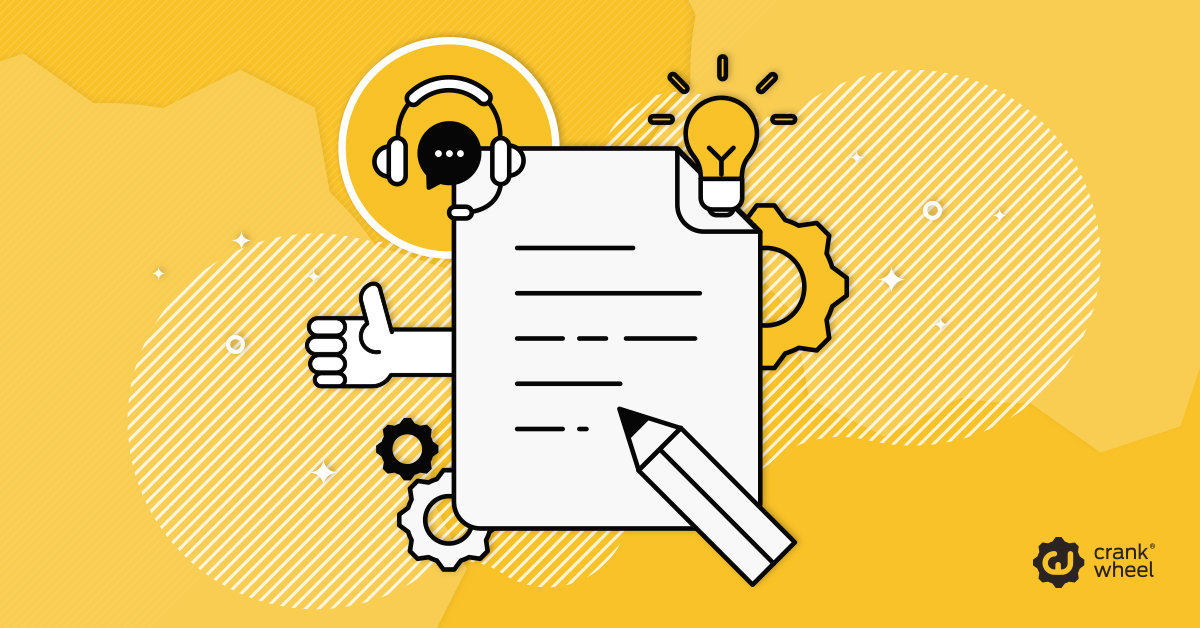A guide to sales scripts in consultative selling
Sales people have always had an uneasy relationship with scripts. Many think they’re not going to sound genuine and convincing. And to an extent, they’re right to worry about that.

But at the same time, free styling and hoping for the best is probably the quickest way to forget key qualifying questions that need to be asked, or neglect to pitch an important sales message. Scripts are a way of providing prompted nudges at the right time.
Scripts are a way of navigating sales conversations and directing them the way you want. If this is something you’ve never done in practice, you’ve probably seen The Wolf of Wall Street. No professional salesperson or leader would recommend selling anything that way. In B2B sales, it’s all about consultative selling.
Consultative selling is all about asking the right questions. In this article, we look at script formats that work and drive conversations forward the right way.
How to create effective sales scripts?
Firstly, you should always start with customer pain points.
Look at how your product/service solves them, then work backwards. Understand it from the customer perspective, and think about some of the most common questions they ask on sales calls.
Any information you can pull together from account managers and customer surveys, case studies, feedback and other conversations are always useful too. Get the complete 360 view of the customer experience. It is equally useful to review the customer journey.
At what point do they enter your sales funnel, and why? If you’ve got an outbound team, what is the hook that engages them?
Some products and services have dozens of reasons customers buy them. Others have only one or two. Consultative selling succeeds when a sales team can accurately assess pain points, qualify sales leads, then move them forward in the sales pipeline.
Taking all of this into account, there are a few essentials that every sales script needs:
- Value statements, for example: “Our product delivers X for companies such as yourselves; we help our clients achieve Y% growth”
- Social proof: “We work with other clients in your sector, of a similar size, who are all facing the same challenges, such as [name a client they should have heard of].”
- Pain point qualifying questions. These are essential, and in many ways the most useful aspect of a sales script. Unless your team knows the questions to ask, qualifying leads is always going to be a challenge; so having a bank of these ready in a sales script can ensure the right questions are asked in the right sequence (or when a prospect statement prompts a question to be asked):
- What problem are you trying to solve?
- Why are you trying to solve it, or why is the solution so important?
- Is there an urgency to finding a solution?
- Have you already tried a solution [or another provider], and if so, why didn’t it work?
- What happens if no solution is found?
- Could this have a personal impact on your career, or career advancement?
- Do you have a budget for this solution?
- What sort of timescale are you looking at for implementation?
- Who would you need to convince to sign-off on this?
- How can I help you convince them?
- What is a solution going to be worth (e.g. ROI)?
- Based on what we’ve talked about so far, does our solution solve this problem for you?
- Tell me about those who will be using this and how this could impact their average workloads?
In every sales process, the questions need to be tailored around the prospects and what you are selling, of course. Every sales process is unique, and a range of questions can be asked at various stages in the sales pipeline. Either early-on, during the discovery stage, or in an initial call, or during a live online demo.
Alongside asking questions, sales people need to take another kind of action that is even more important: Listen.
How to use listening in sales scripts?
Actively listen, make notes, and use this active listening to accurately move the conversation along. For example, if a prospect is talking about price, tackle that issue with them. There is no point putting that issue off and talking about features and value when a prospect wants to know what it’s going to cost them.
In the same way that you shouldn’t dive into a price conversation if a prospect wants to know all about features and value. Scripts are there to serve as prompts and reminders, or a sequence of nudges, but not hard-and-fast guidelines to use the same wording in every call.
Sales scripts are useful when they combine the following in the right sequence for prospects:
- Value statements;
- Social proof;
- Qualifying questions;
Plus, active listening on the part of the sales agent asking the questions. Combined, these are powerful sales techniques. A script isn’t meant to be a formal process. Instead, when putting together sales scripts think of the right sequence or prompts when questions could be asked.
One final thing to remember with sales scripts, is to note for those using them not to talk too much. Talking over prospects doesn’t help with rapport building. It also gets in the way of active listening, so aim to use every conversation wisely and get as much as you can from every consultative prospect conversation.
